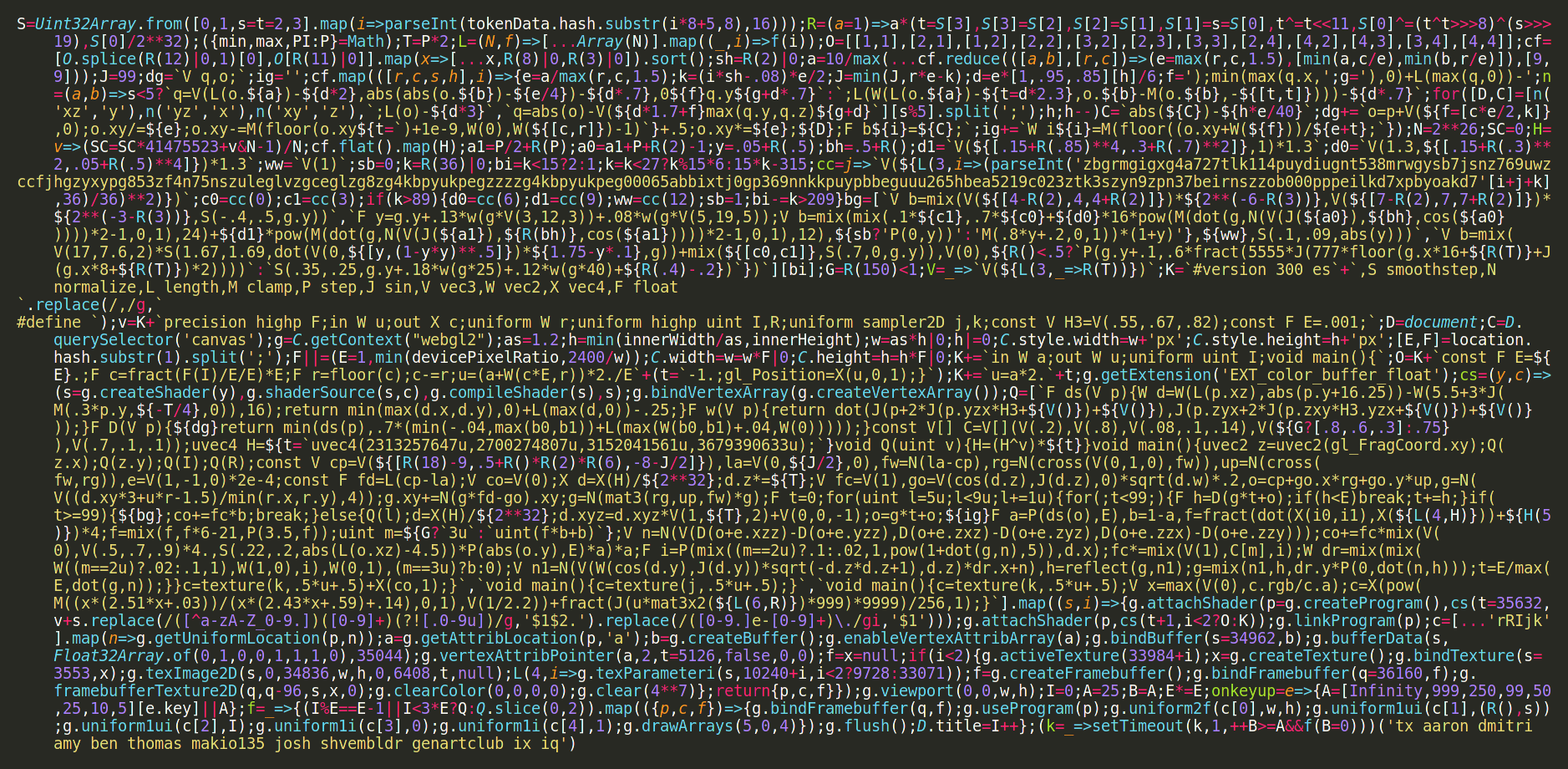Piter Pasma's Pages
Skulptuur
An exploration in generating forms in 3-dimensional space. This exclusive set of sculptures has been carved from a sea of infinite possibilities, much like a sculptor creates a singular reality from the potential in a block of stone. The shapes are illuminated by a variety of complex virtual lighting environments and yet the piece retains algorithmic minimalism with the code reduced to its pure essence – 6370 bytes.
 The entirety of Skulptuur’s code
The entirety of Skulptuur’s code
Let that sink in for a while. You don’t need to understand the code, but this – less than half a page of symbols – can produce this incredible variety of unique and beautiful highly photo realistic images.
check out the Ropsten test mints
Q & A
In this article I talk about my background, inspiration for this project, the demoscene, and other stuff:
In Conversation with Piter Pasma
The Algorithm
 The Algorithm.
The Algorithm.
First, two different grid sizes are selected. Each grid gets an assigned shape. A shape can be either solid, hollow or double shelled.
These two grids are then intersected (step 3), meaning only space that is common to both shape grids, remains.
There are many unique combinations, and thus forms.
Finally the resulting shape is assigned colour and material, which is uniquely linked to its form.
Rendering speed
If you have a fast/powerful computer, you can set the rendering speed higher by pressing 6 or 7.
Similarly, if you have a slower computer, try pressing 1 first, and slowly work your way up until the load is acceptable. It is advisable to reload and hit 1 immediately, because if the load is too high at default speed (5), the browser tab may become unresponsive.
Pressing 0 completely stops rendering.
Safari
Skulptuur does not run by default on the current version of Safari. It does, however, run in the TP (technology preview) version.
In the current version of Safari, it is possible to enable WebGL2 by first enabling developer options, and then enabling the WebGL2 flag.
Tiled rendering
I have a feature in my AB script that I call “tiled rendering”. It allows you to render the image at high resolution without overloading the GPU. You specify it by appending #M;N to the script URL, where M is the number of tiles (an MxM grid), and N is the resolution multiplication factor.
For instance, if you’d append #3;4 to the URL, you’ll get a 3x3 grid of tiles (which will render in sequence, one per frame to limit the GPU load) but at 4x the resolution.
X
Splinters of wood from the shipyard were collected downstream to make boats that are not boats. A fleeting war. Only common ground remained, unrecognizable, and majestic.